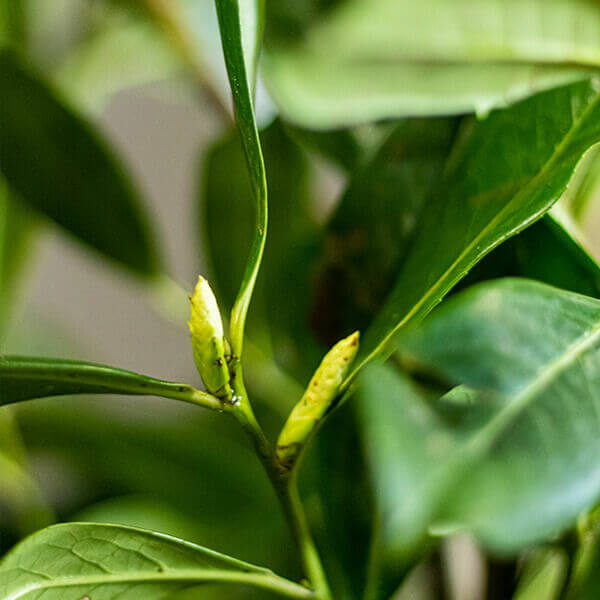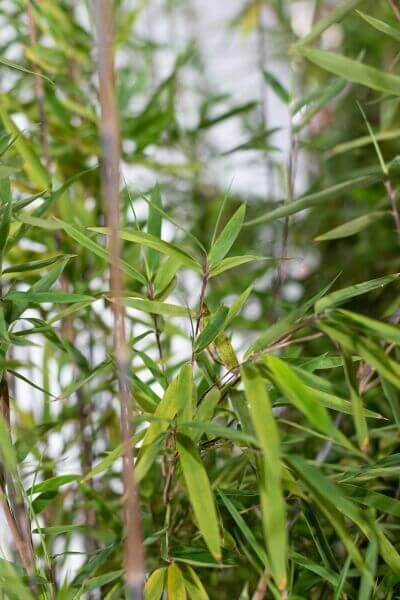Best Hedge Plants For Privacy
Best Hedge Plants For Privacy
Blog Article
Hedging Plants For All Year Interest
Improve your garden's allure with rich hedge varieties such as Yew (Taxus), Thuja, Laurel, Photinia, and Bamboo, celebrated for their structural stability and environmental advantages.
Yew and Thuja offer evergreen coverage and winter season durability, while Laurel offers fast growth and broad, aromatic leaves.
Photinia adds seasonal appeal with its vibrant red foliage, and Bamboo lends a low-maintenance, tranquil ambiance.
These hedges enhance air quality, reduce sound, and create tranquil, private areas.
Appropriate planting, spacing, and upkeep guarantee vigorous growth and ecological harmony.
Explore how these lavish ranges can raise your garden's appeal and well-being.
Secret Takeaways
Transform Your Garden With Lush Hedge Varieties
- Select Yew for its dense, evergreen development and exceptional durability.
- Opt for Laurel for its quick growth and broad leaves, ensuring fast personal privacy.
- Pick Photinia for its vibrant seasonal foliage, which turns a striking dark red.
- Utilize Bamboo for a low-maintenance, winter-hardy hedge with aesthetic appeal.
- Space plants 2-3 per meter and prune regularly for ideal development and health.
Popular Hedge Plants
When changing a garden with rich hedge ranges, it's vital to consider popular hedge plants such as Yew, Thuja, Laurel, and Photinia due to their unique characteristics and benefits.
Yew (Taxus) is highly esteemed for its longevity and dense, green growth, making it a prime option for sustaining landscapes.
Thuja is kept in mind for its evergreen foliage and robust winter season strength.
Photinia includes seasonal vibrancy with red leaves that darken over time, creating vibrant visual appeal.
Laurel uses quick development and fragrant, broad leaves, suitable for quick privacy.
In Addition, Bamboo is an outstanding option for ambiance, offering a low-maintenance, winter-hardy option that enhances the garden's aesthetic with its classy, swaying walking canes.
These selections cater to a range of horticultural requirements and preferences.
Advantages of Garden Hedges
Garden hedges provide a wide variety of benefits, making them a valuable addition to any landscape. These natural barriers are cost-efficient to execute and provide substantial wind security, enhancing air blood circulation and contributing to sound reduction. The thick foliage of hedges like Thuja and Beech ensures personal privacy by blocking exposure, creating a secluded and peaceful environment.
Hedges also play a vital role in microclimate guideline, offering a stable environment that cultivates plant growth and reduces temperature level changes. Their intricate leaf structures filter toxins, improving air quality and contributing to a healthier garden environment.
Furthermore, hedges master noise reduction, taking in and deflecting sound waves to lower ambient sound levels. This dual performance of providing both visual and acoustic personal privacy improves the general tranquility and visual appeal of any garden.
Planting and Upkeep Tips
For a successful hedge, meticulous preparation of the planting area is crucial. Guarantee the soil has proper pH and drain to support strong root development.
Area the plants appropriately for the selected types. Water the hedge frequently throughout its preliminary growth phase, changing as required with seasonal modifications.
Execute a organized pest control and disease avoidance method, utilizing chemical or organic treatments when needed. Frequently inspect for aphids, mites, and fungal infections.
Apply mulch to keep wetness and reduce weeds. Seasonal pruning promotes thick growth and air circulation, important for plant health.
Following these standards will assist you cultivate a lively, well-maintained hedge that enhances the appeal of your garden.
Spacing and Trimming Guidelines
Spacing and Trimming Guidelines
Proper spacing and trimming are essential for cultivating healthy, visually appealing hedges. Sufficient spacing guarantees each plant gets adequate nutrients, light, and air flow.
Follow these guidelines for ideal hedge maintenance:
- Spacing: Position hedge plants 2-3 plants per meter to encourage robust development.
- Pruning Strategies: Regular pruning is vital for maintaining desired hedge height and shape. Trim new development in summer and cut back older wood during winter season.
- Seasonal Care: Change cutting approaches and schedules according to seasonal requirements to guarantee plant health.
- Hedge Height: Frequently screen and trim to maintain the desired hedge height and achieve uniform aesthetics.
Complying with these actions will ensure your hedge flourishes, boosting both the appeal and performance of your garden.
Selecting the Right Hedge
Choosing the Right Hedge
Choosing the appropriate hedge includes examining aspects such as mature height, foliage density, and ecological durability. Successful hedge plant choice needs understanding each species' development qualities and site-specific adaptability.
For instance, Yew (Taxus) provides excellent durability and thick growth, while Thuja is notable for its winter season resilience. In addition, considering upkeep requirements is important; fast-growing species like Laurel or Privet need regular cutting, whereas low-maintenance options like Bamboo or Ivy may be more suitable for those looking for minimal upkeep.
Ecological aspects such as soil type, light schedule, and wetness conditions need to likewise guide the selection procedure. This careful method ensures the selected hedges will grow, offering both visual and functional advantages to the garden landscape.
Delivery and Planting Advice
To ensure your hedge plants prosper, they ought to be provided by specialized carriers and planted quickly upon arrival.
Follow these vital actions for effective planting:
- Soil Preparation: Enrich the soil with organic matter to improve drainage and nutrient content.
- Planting Depth: Create a trench two times the width and equal to the depth of the root ball.
- Watering Methods: Water completely after planting, keeping the soil regularly wet however not saturated.
- Mulching: Apply a layer of mulch to keep wetness and reduce weeds.
Customer Support and Service
Given the important function of timely support in horticultural pursuits, our client assistance team is offered six days a week through telephone, e-mail, and social networks to use skilled guidance and promptly deal with any issues. Their commitment to fast response times makes sure customer complete satisfaction by fixing queries associated with plant health, optimum planting approaches, and maintenance schedules.

Schedule
-----------------
Within 24 hours
This thorough support group, strengthened by a stellar 9.3/ 10 client score, highlights our dedication to boosting the gardening experience for every customer.
Regularly Asked Questions
For How Long Does It Consider Hedge Plants to Develop?
Hedge plants generally require one to 3 years to end up being totally developed, with the exact duration differing by types and growing conditions.
Reliable care throughout this crucial duration is important for robust growth. Consistent watering, watchful weed control, and suitable fertilizer application are read more pivotal in promoting strong root advancement.
For instance, fast-growing species like Laurel may develop quicker, while slower-growing varieties such as Yew may take longer. Diligent upkeep accelerates the facility process, leading to healthy and thick hedges.
What Are the Best Hedge Plants for Privacy?
The concern of the best hedge plants for personal privacy involves evaluating evergreen and deciduous alternatives.
Evergreen hedges like Thuja, Laurel, and Cypress provide year-round protection, guaranteeing constant privacy.
In contrast, deciduous hedges such as Beech offer seasonal privacy, shedding leaves in colder months.
Secret upkeep suggestions for privacy hedges include routine cutting, fertilizing in spring, and appropriate spacing-- usually 2 to 3 plants per meter.
Furthermore, constant watering and persistent weed elimination are crucial for promoting healthy, thick growth.
Can Hedge Plants Bring In Wildlife to My Garden?
Yes, hedge plants can bring in wildlife to your garden by offering important benefits like shelter, food, and nesting websites, consequently boosting regional biodiversity. Yew, holly, and laurel are outstanding for bring in birds, while ivy supports a variety of pests.
Nevertheless, it is necessary to keep in mind that there are some drawbacks, such as increased upkeep to manage bugs and routine upkeep. Carefully choosing and preserving hedge varieties can assist balance these downsides and advantages, eventually fostering a dynamic and sustainable community in your garden.
Are There Any Blooming Hedge Plants Available?
Yes, there are flowering hedge plants available that can boost the beauty of your garden.
For instance, Elaeagnus, also known as Olive Willow, produces fragrant white flowers in the fall, including a touch of sophistication.
Photinia, another popular option, showcases lively red leaves that grow into an abundant green, producing a dynamic visual effect throughout the seasons.
To ensure these plants thrive, it's vital to practice correct pruning strategies and seasonal maintenance, such as trimming new development in the summertime and cutting back in the winter.
These procedures will assist maintain the health and visual appeal of your flowering hedges.
How Do I Prevent Insects in My Hedge Plants?
To prevent pests in hedge plants, use natural insect control techniques and maintain proper hedge care. Present beneficial bugs like ladybugs, which take advantage of harmful bugs, to produce a balanced environment.
Routinely inspect your hedges for indications of invasion and quickly remove any afflicted parts to prevent the spread. Guarantee the health of your hedges by applying well balanced fertilizers and providing appropriate water.
Use mulching to retain soil moisture and correct spacing to minimize plant stress and promote robust growth. These practices jointly help in minimizing bug concerns and preserving a healthy hedge.
Conclusion
In essence, choosing the ideal hedge varieties such as Yew, Thuja, and Laurel can transform any garden into a relaxing haven. These plants provide year-round plant, boost aesthetic appeal, and offer practical benefits like sound reduction and wind security.
Correct planting methods, precise spacing, consistent watering, and seasonal cutting are crucial for optimal development.
Reliable delivery services and skilled customer support ensure a seamless experience from purchase to planting, making it easier than ever to raise your outside area.
Garden hedges offer a multitude of benefits, making them a valuable addition to any landscape. These natural barriers are economical to carry out and provide significant wind protection, improving air flow and contributing to sound decrease. The thick foliage of hedges like Thuja and Beech makes sure personal privacy by blocking presence, developing a secluded and serene environment.

Pruning Strategies: Routine pruning is vital for preserving desired hedge height and shape. Cut brand-new growth in summer and cut back older wood throughout winter.
Report this page